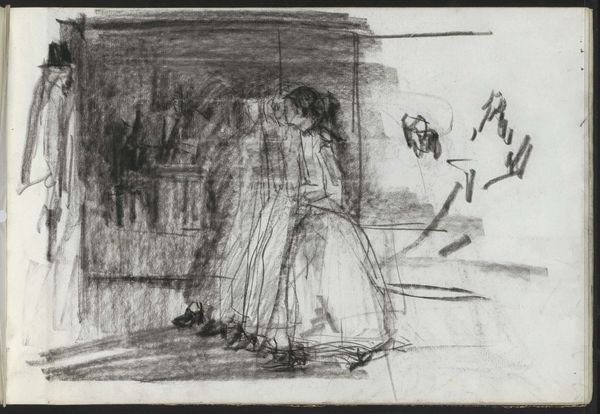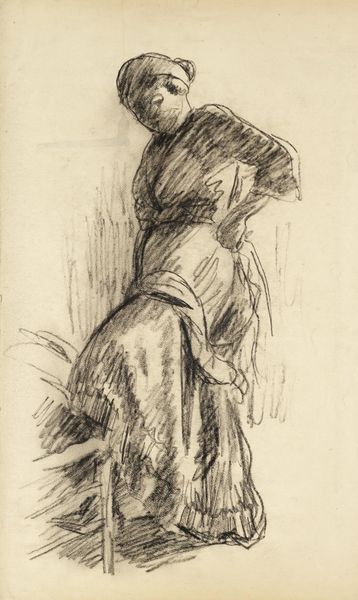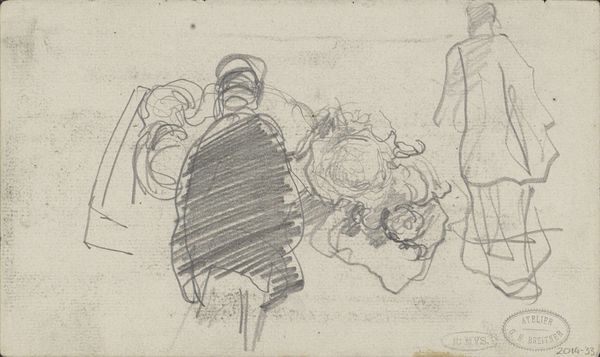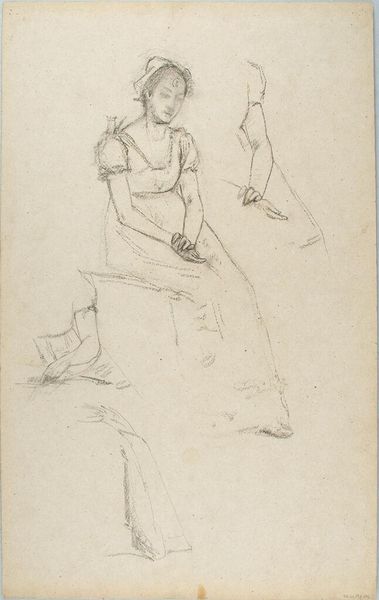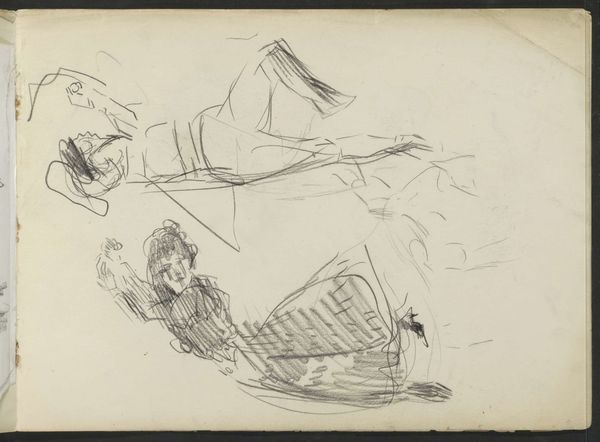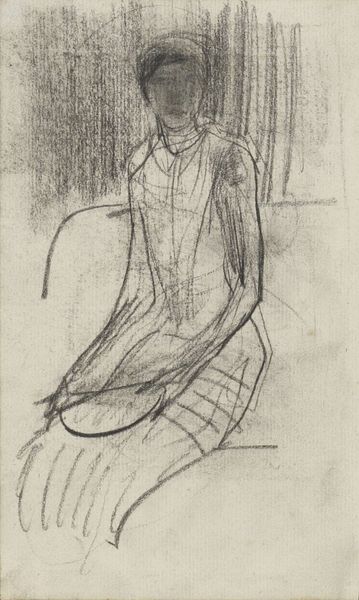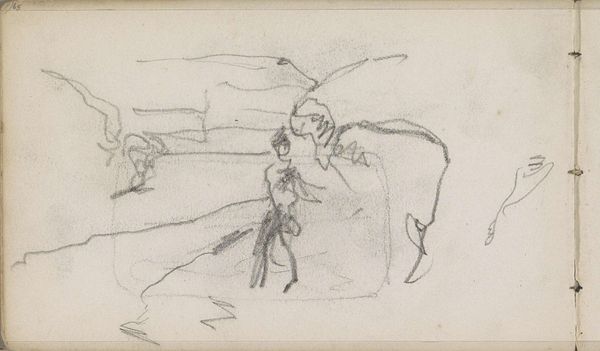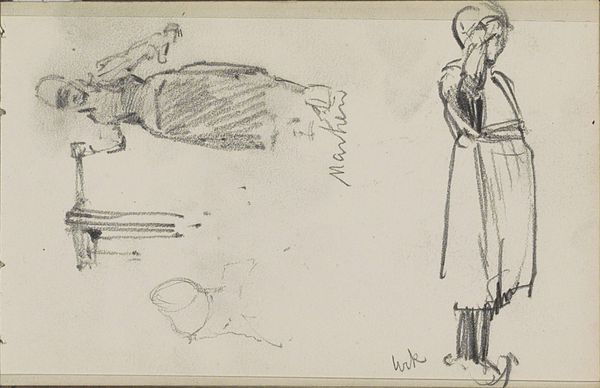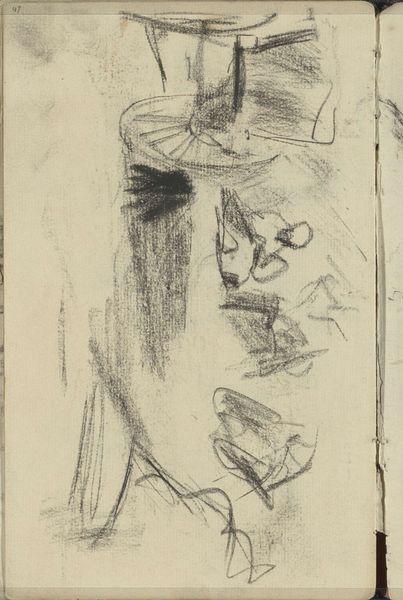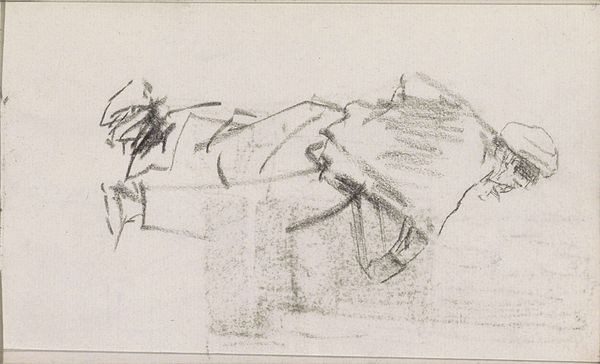
#
amateur sketch
#
quirky sketch
#
incomplete sketchy
#
personal sketchbook
#
idea generation sketch
#
sketchwork
#
detailed observational sketch
#
sketchbook drawing
#
fantasy sketch
#
initial sketch
Copyright: Rijks Museum: Open Domain
Curator: This rapid sketch presents a snapshot of two women by Isaac Israels, dating from around 1875 to 1934. It's held here at the Rijksmuseum. What's your immediate take? Editor: There's a captivating sense of immediacy about it. Raw, almost unfinished. It's more about the suggestion of form and movement than concrete depiction, don't you think? Curator: Absolutely. For me, that rough quality actually strengthens the sense of immediacy and reveals an unguarded observation. Look how he uses hatching and cross-hatching to suggest depth and shadow, it creates volume with just a few strokes. These aren't posed portraits, these are women in motion, probably observed from daily life. The symbol of woman on the go in city-scapes? Editor: Good point! But also I see a potential socio-political commentary within that fleeting depiction. This era saw debates on women's roles and public presence. Israels capturing them in transit normalizes, even celebrates, their evolving place in society. He captures it perfectly, in such minimal terms. The symbols here are social more than iconic. Curator: Perhaps! But that shorthand also speaks to something universal about the experience of womanhood throughout time. Garments change, context alters, yet something remains. Editor: The sketch’s roughness also allows a reading where the viewer is encouraged to participate. Because they are “unfinished” in some ways, they open an avenue to question society back then and even now. How do we place women today compared to the previous centuries? I find them extremely provocative in their sketchy qualities. Curator: True, that invites more contemplation, which is valuable. These sketches become potent historical and social markers when presented within the collection of the Rijksmuseum. Editor: Indeed. In fact, seeing them here allows for different readings about its role: is this the product of private inspiration or political discourse? Curator: It underlines the dialogue at work when art meets its audience. Editor: Precisely. A dialogue, both unfinished and eternally ongoing.
Comments
No comments
Be the first to comment and join the conversation on the ultimate creative platform.
